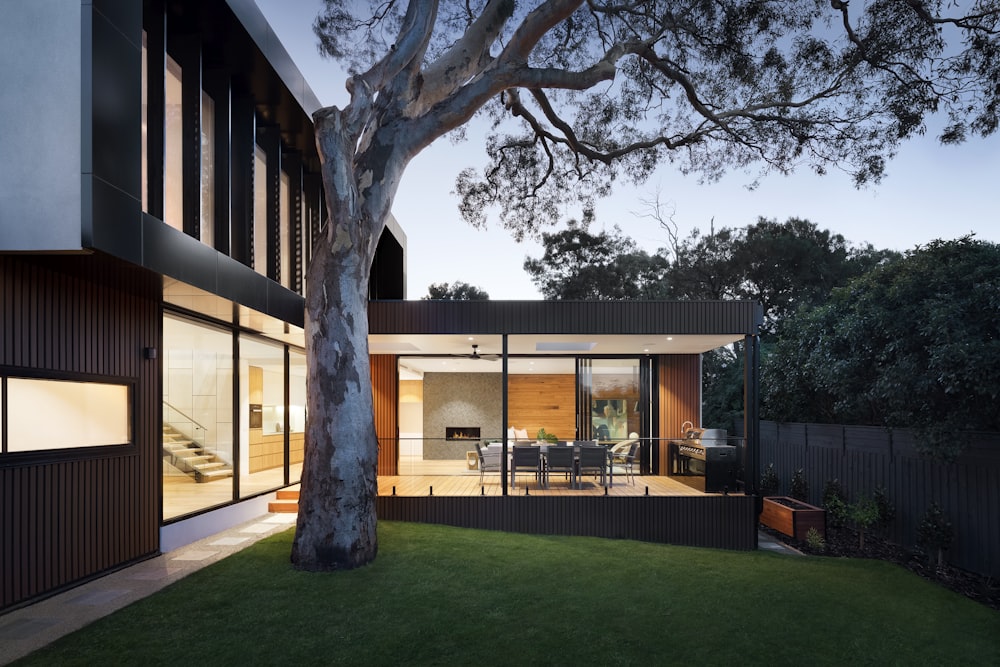Are you thinking about transforming a space into something entirely new, like turning a quaint old building into a bustling coffee shop or converting a garage into a cosy living space? If so, you're about to embark on an exciting journey that requires a special kind of approval known as "change of use planning permission."
Navigating the world of planning permissions in the UK can be a bit of a maze, especially when you're dealing with a change of property use. Thankfully, this article is here to serve as your trusty guide, helping you make sense of what change of use planning permission is, why it’s important and what’s involved in the application process. We will also share a few tips and best practices to help you navigate the process smoothly and obtain the permission you need to make your conversion dream a reality.
What Is Change of Use Planning Permission?
Change of use planning permission is a crucial process in the UK, governing the transformation of a building or land’s function. Say you want to convert a retail shop into a café or an old warehouse into trendy apartments; you'll need this specific permission. It's not just about physical alterations; the key is the change in the building’s use class as defined in UK planning law. This permission ensures that changes align with local planning policies, considering factors like environmental impact, community needs and local infrastructure. It's about fitting your vision into the community without causing disruptions.
Why Is Change of Use Planning Permission Important?
Change of use planning permission is crucial in urban and rural development. The process serves as a regulatory checkpoint, ensuring that any transformation in the use of a building or land is appropriate for its location and community. It's not just a bureaucratic step; it's about preserving the character of neighbourhoods, managing environmental impacts and ensuring that infrastructure like roads and services can support the new use. By controlling these changes, planning permission helps maintain a balanced, sustainable community environment. It prevents potential negative impacts on neighbours, traffic flow, local businesses and the overall aesthetics of an area. In essence, it's about harmonising individual ambitions with the broader community’s well-being.
Types of Changes That Require Change of Use Planning Permission
In the UK, certain alterations in the use of a building or land trigger the need for change of use planning permission. This isn't always straightforward, as it depends on the specific 'use classes' defined in planning law. For instance, changing a retail shop (Class A1) to a cafe or restaurant (Class A3) requires change of use planning permission. Similarly, converting an office space (Class B1) into residential apartments (Class C3) is another common change requiring approval. However, some changes within the same use class, like turning a restaurant into a shop, might not need permission. It's crucial to understand these use classes to determine whether your project needs official approval
You can find out more about change of use planning permission requirements, classes and exceptions here.
The Application Process
Embarking on the application process for change of use planning permission in the UK can be complex, but with a clear understanding and strategic approach, you can navigate it successfully.
Here's a detailed guide on what’s involved in the change of use planning permission application process.
Initial Research and Preparation
Firstly, determine if your project actually requires change of use planning permission. This involves understanding the different use classes and whether your intended change falls within these categories. You can use resources like the Planning Portal (linked above), local council websites and government guidelines to gather all necessary information.
Pre-application Consultation
Before submitting your application, it's a good idea to consult with your local planning authority (LPA). They can offer preliminary advice and highlight any potential issues with your proposal. This step can save you time and resources as you can address any possible concerns early on.
Preparing the Application
Once you’ve determined that your project is viable and you need change of use planning permission, the next step is preparing detailed plans and documents that accurately represent your proposed change. This includes site plans, floor plans and a detailed description of the proposed use. Make sure that all these documents are clear, professional and adhere to any specified guidelines.
Depending on the project, you might also need to include supporting statements such as a Design and Access Statement or a Heritage Statement, especially if your project involves a listed building or the property is in a conservation area.
Submission and Fees
The next step is submitting your change of use planning permission application. Most applications are submitted through the government’s Planning Portal. Make sure you complete all required sections and upload all requested documents.
Once you’ve done that, you will need to pay the relevant fee. This fee will vary depending on the nature and scale of your project. You can access a fee calculator on the Planning Portal to determine the exact amount that you need to pay.
Post-Submission Process
Once you’ve submitted your change of use planning permission application, the LPA will validate your application and confirm receipt. They may request additional information if needed.
During this stage of the process, the LPA will usually conduct a public consultation, where neighbours and local stakeholders can view and comment on your proposal. Additionally, a planning officer may visit the site to assess the proposal in its physical context.
Before making a final decision, the LPA will consider various factors, including planning policies, consultation responses and any material considerations. This process typically takes around eight weeks, but this can vary depending on the complexity of your application.
Outcome
All that remains by this stage is being notified of the final outcome of your change of use planning permission application. If the LPA approves your request, you will receive a favourable decision notice. It’s important to read and understand any conditions attached to the permission. If the LPA rejects your application, the decision notice will explain why. You can choose to appeal the decision or amend your proposal and reapply.
Tips for a Smooth Application Process
Lastly, let’s take a look at a few tips to help you navigate the change of use planning permission application process as smoothly as possible and obtain that all-important change of use approval:
- Thorough research. Make sure you thoroughly understand your project and research all planning authority requirements. Use resources like the Planning Portal and your local council's website for specific guidelines and application procedures.
- Early consultation. Engage with your local planning authority (LPA) early on. This can highlight potential stumbling blocks and provide you with invaluable guidance into how to address them in your application.
- Accurate documentation. Make sure that all the documents, plans and drawings that you submit are accurate and as detailed as possible. This can significantly speed up the LPA review process.
- Understand local policies. Familiarise yourself with local development policies. Aligning your application with these policies can greatly improve the chances of your application being approved.
- Neighbourhood consideration. Proactively address potential impacts on your neighbours. Demonstrating how you plan to mitigate issues like noise or traffic can help you pre-empt any potential objections.
- Seek expert advice. If your project is complex, consider hiring a planning consultant to navigate planning laws and improve your application’s success rate.
- Patience and flexibility. Above all, be prepared for the fact that the change of use planning permission application process can take some time, often longer than expected. Finally, stay flexible and open to making changes based on feedback from the LPA. Patience and attention to detail are key in navigating this process effectively.
Tags:
planning permissionFebruary 15, 2024









Comments